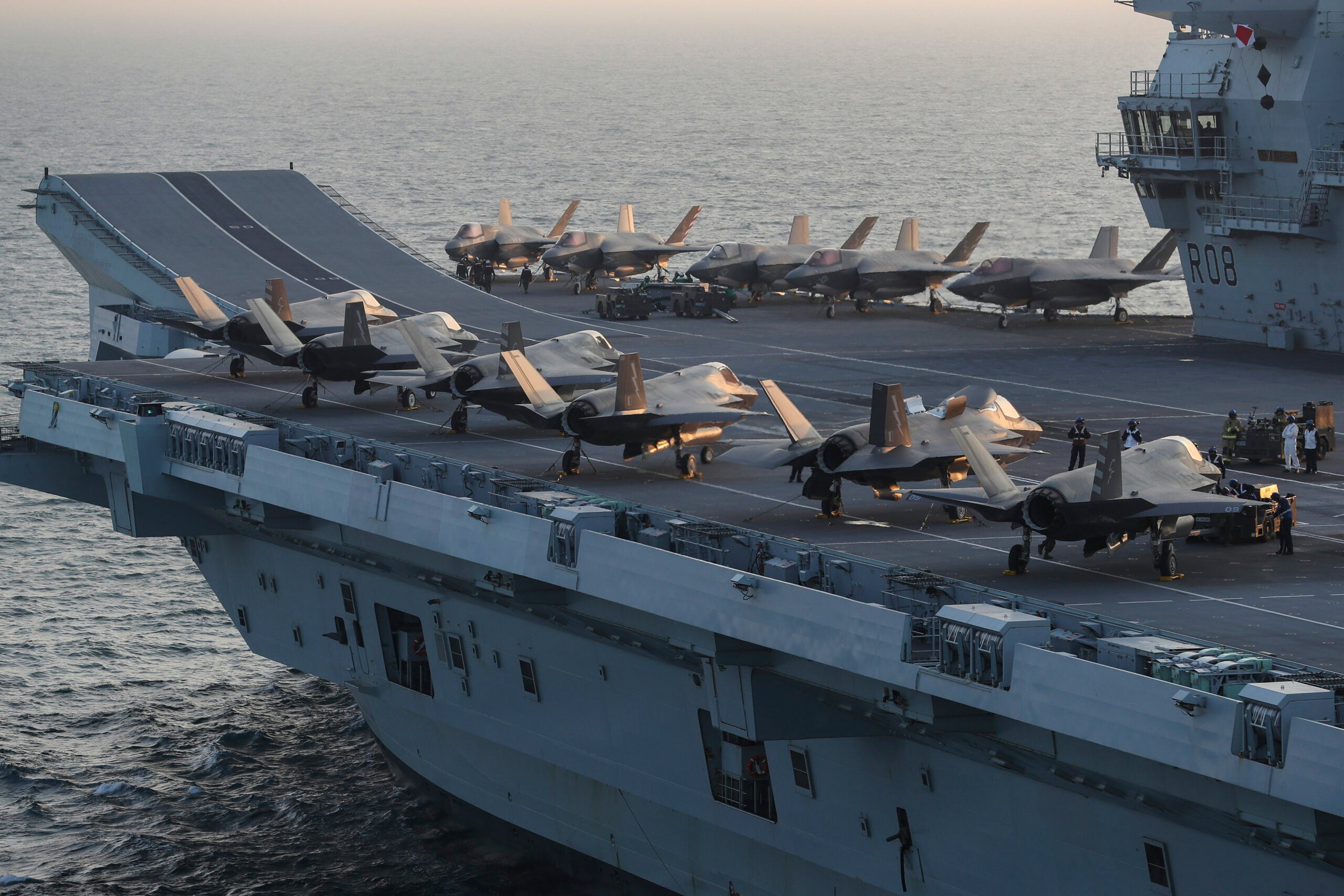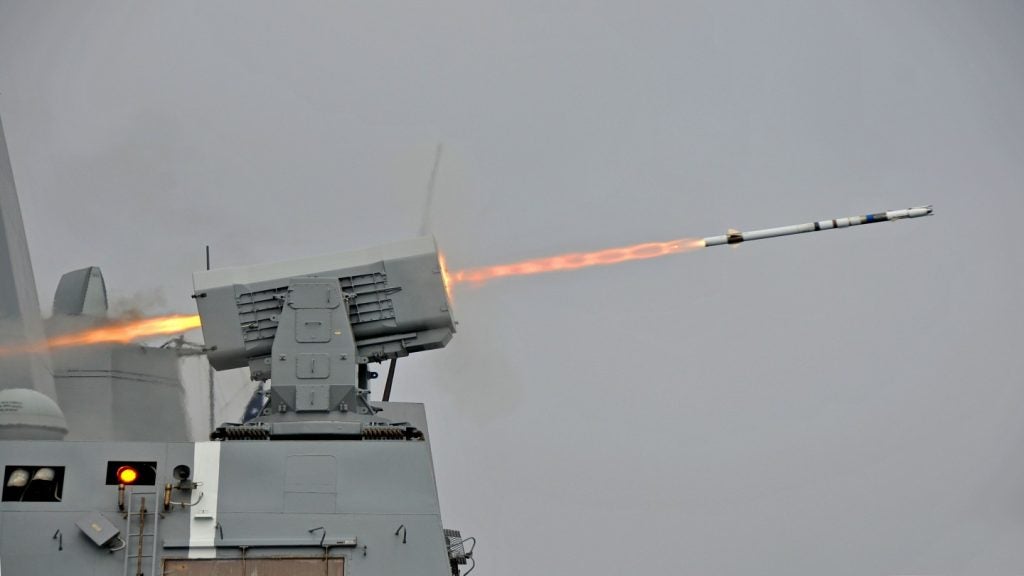
“The deployment of the Carrier Strike Group to the Pacific is the first test of the UK’s new capability, and it’s an all-in gamble,” says Pivot Point strategic adviser and co-founder of Eliot Wilson. “HMS Queen Elizabeth and her support vessels are the mainstays of the Royal Navy’s surface fleet, and to deploy to the South Pacific – especially if it includes the South China Sea – is ‘global Britain’ given maritime form.”
In a foreword to the Integrated Review, Prime Minister Boris Johnson called the upcoming mobilisation ‘the UK’s most ambitious global deployment for two decades’, adding that it would demonstrate the UK’s ‘ability to project cutting-edge military power in support of NATO and international maritime security’.
For the deployment, HMS Queen Elizabeth will be joined by Type 45 destroyers, Type 23 frigates, a tanker and resupply ship and an Astute-class submarine, as well as US and Dutch vessels, F-35B fighter jets, and Merlin and Wildcat helicopters.
A ‘tilt’ to the Indo-Pacific is a key aspect of the Integrated Review. In the UK’s recently released Defence Command Paper, the government states that the ‘strategic utility’ of the newly-regenerated Carrier Strike Group would be demonstrated by the inaugural deployment.
Global Britain: carrier strike sends a ‘clear signal’
According to International Institute for Strategic Studies naval forces and maritime security senior fellow Nick Childs, the UK’s decision to regenerate its carrier capability at such a strong level was a deliberate decision to climb back up the ladder of maritime-centred power projection – with the Indo-Pacific deployment being a demonstration of that in a region outlined by the government as key to its plans for a ‘global Britain’.
“It’s important in terms of strategic signalling in multiple ways,” Childs says. “But the point about carrier-based power projection is also that it’s mobile, so it’s not just about the Indo-Pacific but could equally be about other regions where the UK might wish to deploy the group, and an interesting question is how and where the UK will choose to operate its new carriers into the future.”
How well do you really know your competitors?
Access the most comprehensive Company Profiles on the market, powered by GlobalData. Save hours of research. Gain competitive edge.

Thank you!
Your download email will arrive shortly
Not ready to buy yet? Download a free sample
We are confident about the unique quality of our Company Profiles. However, we want you to make the most beneficial decision for your business, so we offer a free sample that you can download by submitting the below form
By GlobalDataChair of the Commons Defence Select Committee Tobias Ellwood says that global Britain must include extensive involvement with nations in the Asia-Pacific, adding that carrier strike deployment was a ‘clear signal’ to the UK’s allies that it is committed to security in the region.
“It is right that the UK should join the US in increasing commitments to the security of the region,” he adds. “The Defence Committee continues to explore the future of the UK-US defence relationship and to seek evidence on how to balance requirements across different regions, domains and theatres where we have shared strategic objectives.”
While the carrier strike deployment can be seen as a bold signal of intent from the UK to re-engage in the Indo-Pacific and a strong sign of the UK’s ability to field a force far from home waters, Childs adds that in the long term, the credibility of re-engagement would be weighed by consistent and enduring presence over time rather than ‘periodic carrier deployments’.
Sustaining deployments will require resources
Achieving this will require a complex juggling of resources and commitments. “This is where questions arise over whether the UK has the resources to sustain an enhanced Indo-Pacific strategy,” Childs says.
“At the same time, despite the withdrawal from east of Suez in the 1970s, the Royal Navy continued to undertake regular deployments to the region. It was only in the last decade, when resources were really stretched, that there was a significant gap in presence and deployments, and this is now being rebuilt. So, there’s history as well as an ambition to give substance to a global Britain agenda.”
One of the aims of the deployment, according to the Defence Command Paper, is to ‘maximise regional engagement’.
The carrier strike deployment can be seen as the start of British naval engagement in the region, paving the way for the permanent forward deployment of offshore patrol vessels later this year, the permanent stationing of a Littoral Response Group from 2023, and, later in the decade, the forward deployment of new Type 31 frigates, one of which is likely to have its homeport in Singapore.
Looking ahead to the deployment, Wilson concludes: “There are substantial risks, military and reputational. HMS Queen Elizabeth is still dependent on US Marine Corps F-35Bs to top up its air wing, and the development of the carrier programme has hardly been gremlin-free.
“Moreover, this is, essentially, all we’ve got. If the deployment doesn’t have any geopolitical effect, it’s a sad commentary on the utility of these extraordinarily expensive assets.”
This article originally appeared in Global Defence Technology.







